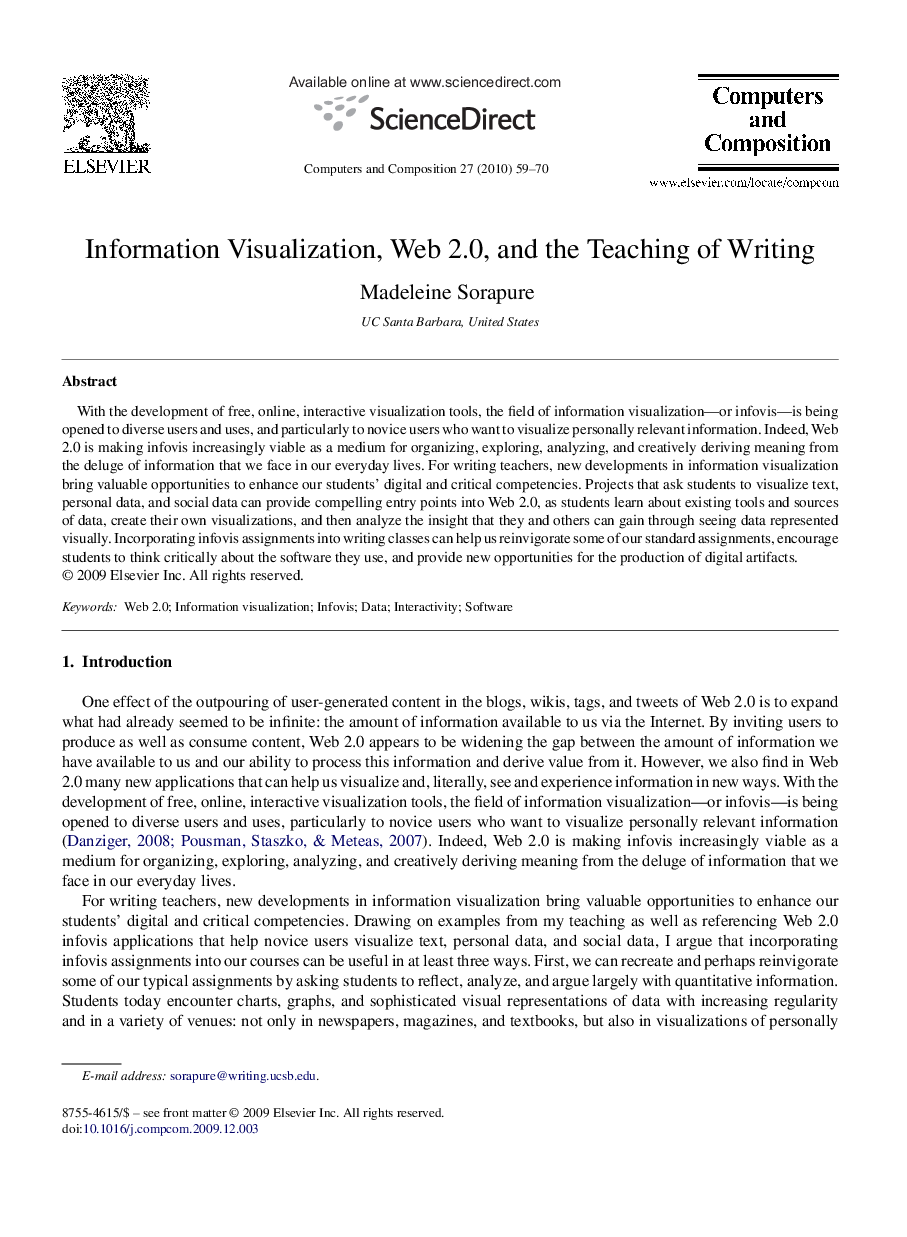| Article ID | Journal | Published Year | Pages | File Type |
|---|---|---|---|---|
| 347867 | Computers and Composition | 2010 | 12 Pages |
With the development of free, online, interactive visualization tools, the field of information visualization—or infovis—is being opened to diverse users and uses, and particularly to novice users who want to visualize personally relevant information. Indeed, Web 2.0 is making infovis increasingly viable as a medium for organizing, exploring, analyzing, and creatively deriving meaning from the deluge of information that we face in our everyday lives. For writing teachers, new developments in information visualization bring valuable opportunities to enhance our students’ digital and critical competencies. Projects that ask students to visualize text, personal data, and social data can provide compelling entry points into Web 2.0, as students learn about existing tools and sources of data, create their own visualizations, and then analyze the insight that they and others can gain through seeing data represented visually. Incorporating infovis assignments into writing classes can help us reinvigorate some of our standard assignments, encourage students to think critically about the software they use, and provide new opportunities for the production of digital artifacts.
